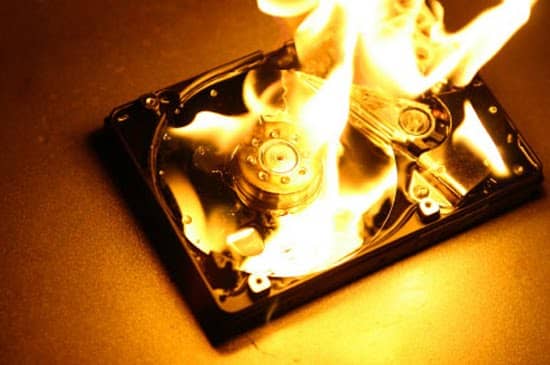How To Learn From Your Mistakes, Like A Pro
“Fail early, fail often, but always fail forward”
Failing is easy. Coping with failure is hard. Even harder, is being able to impartially judge my own performance, so that I can learn from it, and “fail forward”.

I’m a type-A, high-achiever, from a long line of perfectionists and a lifetime of high expectations. One of my biggest weaknesses is that I beat myself up over failure.
Yet without failure, we can’t ever learn. We can’t improve ourselves, nor can we take the risks required to be creative, and achieve success. I’ve come up with a method for judging my performance at work impartially, guaranteeing that I learn from every experience, and limiting my self-flagellation.
I will share my method for overcoming the judgement that comes from every direction, internal and external, and for ensuring I learn productively from every job I do. I will also share some tips for how to address your mistakes with bosses and clients.
The Steep Curve Of Failure (and Success)
In about 2005, I hit a really high point in my career. I was reaching the decade-mark of my career, and really starting to get noticed as a rising star in post production. I got a lot of praise, from a lot of people I really admired. I ate up that praise, and it gave me an enormous confidence boost. I kicked ass. I also started getting to interact directly with Executives and Producers, rather than my usual set of Post Production colleagues. People whose names I’d seen in credits, and idolized, were passing judgement on my work directly. And it was awesome, until it wasn’t.
I was working on a TV series as an Editor. An Executive Producer (EP) asked me to cut together a highlights package from the entire shoot to-date for him, as a short montage. His only instructions were “it should be called ‘blood, sweat and tears’, and make it cool”. I put something together that I loved, and sent it off.
The next morning I was awoken by a phone call. My boss was on the other line, his voice was quiet and shaky.
“I’m so sorry. Please don’t come into work today. The Executive Producer has asked that we replace you on this show immediately,”
I pressed my boss to tell me everything.
“He hated the music you used on the montage. He said you’re the worst editor he’s ever seen, it wasn’t what he wanted at all.”
In one moment I went from living, breathing, and sustaining my career trajectory on the praise of others, to feeling like it was all a lie. I went from being “such a great young talent” to “the worst editor I’ve ever seen”.
The editor who replaced me lasted less than a day, he got the same treatment. Making it worse, I was asked on Day Two by that EP “why didn’t you show up for work yesterday? Now we’ve lost a whole day”. That was the first of a few occasions that really took their toll on me over that year. My self-worth tracked directly with the moods and whims of those I admired and/or worked for.
Eventually, I decided something had to change.
As the author Sarah Knight teaches in her fantastic book “The Life Changing Magic of Not Giving a F***”, I needed to stop caring so much what other people think. I needed to judge my own performance independently, learn from my successes and my failures, and stop relying on anyone else to provide my confidence and self-worth.
I was taking external judgement to heart. Because I am very hard on myself, I would only hear things like “that job was a complete fail” or “you’re amazing”. Neither of those are helpful assessments. Those were also the only thing I’d remember about the job, if I were to work for the same client, or do the same workflow, later on in the future. So all the things I’d actually learned, and obstacles I’d overcome would be forgotten, and time would be wasted figuring them out all over again next time.
I came up with a simple system to turn this around, and it worked.
Failing Gracefully: A Post Mortem System
After every job, I fill in a form, based on a short set of questions. I keep all of these forms in a folder, making them searchable, so that if I encounter a similar job or workflow in the future, I can refer to a fresh memory of the previous job, and learn from it.
On researching how other people do this, in preparation for writing this article, I found that Geoffrey James shared his similar method on Inc., and numerous authors have stated the importance of reflecting and learning from failures.
Some people who I’ve passed on this system have adapted it:
- They fill it out as a living document, as they go through the job. Then review it at the end
- As a facility we each fill it out and share our answers. This creates a single team version.
Another decade later, I give this post-mortem to just about everything I do.
The post-mortem keeps myself in check, so I don’t beat myself up over mistakes. I can now take on even the harshest criticism with this powerful logical armor. People freak out when I say “yes, I really did fail terribly on that job”, with a calm, confident air. But this system has really helped me, and a lot of people I’ve worked with. I encourage you to try it, adapt it to your needs, and share it with others.
The System
These are the 8 key questions you answer at the end of (or during) every job – and be honest with yourself:
- Describe the workflow
- What went well?
- What went badly?
- What were some of the factors that helped things go smoothly?
- What were some of the factors that got in the way?
- What are you proud of?
- What did you learn?
- If you were to start this project over today, what would you do differently?
Describe The Workflow
This question is designed to jog your memory, years into the future. Think of it as making the document more searchable. It’s simply “what was the job”.
An example workflow description of a single job:
- Indie Feature film. Avid turnover via aaf, conform and grade in Quantel Rio. ARRI PR4444 4K
- Some frame rate conversion on Drone footage, minor clean-ups and vfx work, day-for-night grade. P3 grade, 2K 2048×868 DCP delivery. Titles from external vendor, credits from Endcrawl.com.
What went well?
Think about the aspects that went really smoothly, as planned, or better than expected. Even on the most nightmare jobs there will be something that went to plan! I’ve had terrible jobs where I’ve noted “catering was consistently great, and always healthy, tasty, reliably on time”.
Other common examples:
- Everything conformed seamlessly from the XML, no missing footage
- The client was happy with the titles, minor notes
- Tried using collaborative docs to communicate changes, was awesome!
What went badly?
Here’s where you go over all the things that didn’t go so great. List your mistakes, list the things that disrupted the workflow.
Just list what went badly, don’t analyze.
Some of mine from the archives:
- I forgot to convert the B-Cam to the correct colorspace, and had to go back, find, and fix it all during the grade session
- EDL from FCP as provided by editorial wouldn’t conform, was missing all source info
- Struggled to keep track of VFX versions, meaning a few times the wrong version was put in front of the client
- Communication between Director and Post Supervisor was non-existent, so the team was often poorly informed or unprepared for client-attended sessions
What were some of the factors that helped/hurt your performance?
This one is where you really look at the circumstances and influences for both sides of your performance, good and bad. There will always be things both outside, and within your control, on these two lists. I have found that really analyzing everything, not skipping any of the questions, means I don’t make excuses. Having both the positive and negative factors laid out brings a really balanced, logical calm to my Post Mortem (most of the time).
It’s also fine to double-up from your previous lists. It’s also okay to be candid. Real-life examples from my work, again:
Helped:
- Using collaborative docs to communicate changes
- Getting healthy, tasty lunches catered meant I was always properly fed, and it took one thing off my mind when things got intense
Got in the way:
- Computer was too slow, drives kept filling up
- The Post Supervisor! Grrrrrr.
- Short deadlines meant I was under a lot of pressure, and didn’t have enough sleep
What are you proud of?
I like this one. This is where I directly replace other people’s praise and build my own self-confidence, from my own approval.
I come from a culture where humility is so over-valued that it’s frowned upon to celebrate your achievements, acknowledge your individual strengths or give yourself praise. I learned when I moved to America that it’s much healthier to have a little bit of an ego! That cultural background difference means that some people will find this question much more challenging to answer than others will.
Whether you share your answer or keep it private, make sure you give a good one. Free yourself a little, let yourself boast.
Don’t compare yourself to others, focus on yourself here.
Some of my examples include:
- I absolutely nailed an impossible sky replacement! In fact, all the VFX and clean-up work in this film, is some of my best work.
- When the client panicked after seeing a mistake, I diffused the situation calmly, and handled it really well.
- I really like my grade on the opening scene, it’s beautiful
What did you learn?
This question is where you take both your successes and failures, as written out, and use them to reflect on what the experience has taught you.
Every time we do a job, we learn something.
Those lessons might be technical, a trick or a workaround; or something about yourself or your colleagues. Look back at what went wrong, and what went right. From every one of those bullet-points is a lesson learned.
If you make sure the described workflow at the top of your document is searchable, the lessons you’ve learned can be applied to the next time you have a job with similar attributes. You won’t make the same mistakes twice, and every mistake you have made this time, is guaranteed to make you better at what you do.
This searchability is easily done if you keep your Post-Mortems in Google Drive, Notes, or a Journaling app.
Thinking about what you’ve learned is empowering. It actively creates a psychological shift, that gives meaning to the famous adage quoted at the top of this article. We want to fail early, often and forward; that’s how we learn. Celebrate that learning by acknowledging it, and knowing it has made you better at your job.
If you could start again tomorrow, what would you do differently?
We all wish we could really make use of hindsight; and never more than when we identify how we could have made better decisions or that we’ve learned a valuable lesson.
The great thing about this exercise is that it gives you lots of opportunities to make use of hindsight. The lessons you’ve learned will be quickly forgotten. Especially the ones that make up the overall small adjustments to how you might go about doing the job next time.
I have benefited many times from searching my post-mortem archives, and reviewing my answer to this question. I have been able to avoid repeating mistakes, and used every aspect of my prior experience – my successes, failures, things I’ve learned along the way – to dramatically improve my professional performance.
That is how I learned to stop worrying and love to bomb.
Okay, that’s half true. I’ll always worry, and nobody likes to fail, but I have found that I no longer beat myself up over my mistakes, and I appreciate having failed and learned valuable lessons. I am not afraid to experiment, push myself and try something radical, for the same reason.
I have enabled myself to fail forward.
When I do fail, I have also learned how to recover quickly… which is where we wrap up this Insight.
Recovering from a fail (the professional tuck & roll)
Being more comfortable with failure also requires the ability to do so gracefully, and to recover quickly. Jazz musician Miles Davis once said,
“When you hit a wrong note, it’s the next note that makes it good or bad.”

First of all, take a deep breath.
Your first instinct will be to panic, which often leads to a poorly thought out reaction. That might lead you to do something that makes it harder to recover from your mistake. It might lead to you beating yourself up. Say some curse-words, get it out, but make it quick: Then launch into recovery mode.
Figure out a solution.
The first step to that is to actually identify the problem. Sometimes a client will come to you, sirens blazing like something is on fire, declaring a catastrophe, when in fact you have not made a mistake. Everything is fine. Other times, there is a problem, so find the mistake and identify what is wrong.
Occasionally, this is a step that can be skipped, for obvious reasons.

There is likely a solution, it might require other people’s help, it might not. There might be more than one solution – in fact there often is. You’ll need the most efficient, disruption-minimizing solution, and the best long-term solution. Immediately, patch the hole you’ve made, to stop any more damage being done or disruption from happening, if you can.
Put a time limit on your first move
The best solution isn’t always right solution. When you have made a mistake that could impact others, you need to implement a solution that will stop the problem within 5-10 minutes. Often, when the problem is technical, we want to find the most robust long-term fix. The one that repairs at the source. But when any delay is going to affect others, too, you must implement an immediate solution. Once the dust has settled, go back and make the more permanent repair.
Communicate
Communicate strategically and wisely. But make sure you communicate.
To those who might be delayed or affected, you need to let those people that there is a disruption, and that it will delay/affect them for a specific amount of time. You don’t need to elaborate, the most important thing is that you can minimize the negative impact of any problem by allowing those affected to plan accordingly for the disruption. This can lessen any “snowball effect” on your colleagues, and can manage other people’s expectations, taking some of the pressure off you. Don’t use any negative, colorful or emotional language, just let them know:
“There has been a disruption, which has been solved, but caused a delay of 30 minutes or so. My apologies for any inconvenience, thank you for your patience.”
The second communication you must make is to your superior or supervisor.
At this point you have figured out the problem, made sure you’re not causing further problems for others due to delay, and come up with a solution. Telling your supervisor you’ve messed up can be painful. If you do it this manner I’m about to describe, it can be really positive. Tell your supervisor these things, all at once:
- What happened (don’t make excuses, just say what happened)
- What you have done to solve the problem
- What you will put in place to ensure it won’t happen again
This technique can make you look good, even though you’ve made a mistake. It is empowering, positive, and impressive. Supervisors get mad about people messing up only because it means that they have to deal with it. They have to take ownership to the clients, to their bosses, and they have to fix the problem. If you present them simply with information, not a problem, there is nothing for a reasonable person to get mad about.
Turning a Fail into a Win
I still get mad at myself when I mess up. It’s in my nature, and I can’t help that. I do not, however, stay mad at myself for long. I don’t have time, because I’m busy turning it around as efficiently and thoroughly as I can.
The minute I realize I’ve made a mistake or messed up, I go into recovery-mode. I take a breath, and start the process of:
- Analysis
- Solution
- Communication.
Then once the dust settles and the job is done, I do my Post Mortem exercise.
Using these two techniques, recovering quickly and documenting your successes and failures, you turn every fail into some level of positive experience. You created specific learning outcomes, that will (and do) serve to be incredibly useful on later projects. You demonstrate to your colleagues, supervisors and clients that you’re good in a crisis. You create trust out of chaos by communicating effectively, honestly, thoughtfully and assertively.
Now, join me in celebrating our successes as well as our failures; in confidently failing forward.



